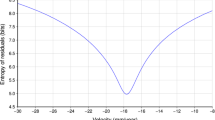Abstract
This paper evaluates various statistical process control algorithms for monitoring the quality of GPS station coordinates in real-time kinematic applications. Real-time detection of small but persistent shifts in GPS coordinates is critical for applications requiring automatic and reliable results in deformation monitoring. Examples include monitoring of dams, high-rise buildings, bridges, tectonic movements, landslides and so on. The conventional cumulative sums (Cusums), the robustified and self-starting Cusums, the adaptive Cusum and the exponential weighted moving average are some of the control charts applied to real-time-kinematic (RTK) data in field experiments. All control charts have been evaluated for their effectiveness in detecting an actual but intentional deformation shift of at least 0.5 standard deviations from a target mean. The observations used in testing these control charts had initially been assumed to be independent and follow a normal distribution, but later, their serial correlation was taken into consideration. These results show that the self-starting but robustified Cusums as well as the exponentially weighted moving average charts are suitable and efficient tools in monitoring quality in the RTK data. All presented control charts are implemented as modules in a software package being developed by the Technical University of Crete.








Similar content being viewed by others
References
Basseville M, Benveniste A (1986) Detection of abrupt changes in signals and dynamical systems. Springer, Berlin Heidelberg New York, p 373
Basseville M, Nikiforov IN (1993) Detection of abrupt changes, theory and application. Prentice-Hall, New Jersey, p 528
Harris TJ, Ross WH (1991). Statistical process control procedures for correlated observations. Can J Chem Eng 69:139–148
Hawkins DM (1993) Robustification of cumulative sum charts by winsorization. J Qual Technol 25(4):248–261
Hawkins DM, Olwell DH (1997) Cumulative sum charts and charting for quality improvement. Springer, Berlin Heidelberg New York, p 247
Huber PJ (1981) Robust statistics. Wiley, New York, p 308
Kim SH, Alexopoulos C, Goldsman D, Tsui KL (2005) A new model-free cusum procedure for autocorrelated processes. J Qual Technol
Lu CW, Reynolds MR Jr (2001) Cusum charts for monitoring an autocorrelated process. J Qual Technol 33(3):316–334
Lucas JM (1982) Combined Shewart-CUSUM quality control scheme. J Qual Technol 8:1–12
Lucas JM, Crosier RB (1982) Fast initial response CUSUM. Technometrics 24:199–205
Lucas JM, Saccucci MS (1990) Exponentially weighted moving average control schemes: properties and enhancements. Technometrics 32(1):1–29
Mertikas SP (1994a) Failure detection in the measurements of the global positioning system. Monograph, Geomatics Engineering Department, University of Calgary, Canada, p 85
Mertikas SP (1994b) The description of accuracy using conventional and robust estimates of scale. J Mar Geod 17:251–269
Mertikas SP (2001) Automatic and online detection of small but persistent shifts in GPS station coordinates by statistical process control. GPS Solut 5(1):39–50
Mertikas SP, Rizos C (1997) On-line detection of abrupt changes in the carrier-phase measurements of GPS. J Geod 71: 469–482
Montgomery DC (2001) Introduction to statistical quality control. Wiley, New York, p 796
Moustakides G (1986) Optimal stopping times for detecting changes in distributions. Ann Stat 14:1379–1387
Ogaja C (2001) On-line GPS integrity monitoring and deformation analysis for structural monitoring applications, 14th international technical meeting of the satellite division of the US Institute of Navigation, Salt Lake City, Utah, pp 989–999
Page ES (1954) Continuous inspection schemes. Biometrica 41:100–115
Roberts SW (1959) Control chart tests based on geometric moving averages. Technometrics 1:239–250
Sparks SR (2000a) Cusum charts for signalling varying location shifts. J Qual Technol 32(2):157–171
Sparks SR (2000b) CUSUM charts for AR1 data: are they worth the effort? Aust NZ J Stat 42(1):25–42
Sparks SR (2004a) Weighted moving averages: an efficient plan for monitoring specific location shifts. Int J Prod Res 42(12):2521–2528
Sparks SR (2004b) A group of weighted moving averages: an efficient plan for monitoring a range of process changes. Int J Prod Res 42(13):2627–2638
Van Dobben de Bruyn CS (1968) Cumulative sum tests: theory and practice. Griffin, London
Wallace DL (1959) Bounds on normal approximations to student’s and the chi-square distributions. Ann Math Stat 30:1121–1130
Yashchin E (1993) Performance of CUSUM control schemes for serially correlated observations. Technometrics 35:37–52
Acknowledgments
This paper is based on a similar paper presented at the ION GNSS 2005, The 18th International Technical Meeting of the Institute of Navigation Satellite Division, Long Beach, California, 13–16 September 2005. This present work has advanced and modified the previous contribution by rectifying the performance of the adaptive Cusum in the first experiment and by improving its performance in the second experiment. It also modified the EWMA chart and increased its performance by reducing the number of false alarms (from 39 to 8). This work has been supported by the “IRAKLEITOS-Fellowships for Research awarded to the Technical University of Crete”, MIS 88727, “Operational Programme for Education and Initial Vocational Training”, Third Community Support Framework co-financed by the European Social Fund. We thank Dr. M. Schenewerk for reviewing the manuscript and making excellent suggestions.
Author information
Authors and Affiliations
Corresponding author
Rights and permissions
About this article
Cite this article
Mertikas, S.P., Damianidis, K.I. Monitoring the quality of GPS station coordinates in real time. GPS Solut 11, 119–128 (2007). https://doi.org/10.1007/s10291-006-0044-6
Received:
Accepted:
Published:
Issue Date:
DOI: https://doi.org/10.1007/s10291-006-0044-6




